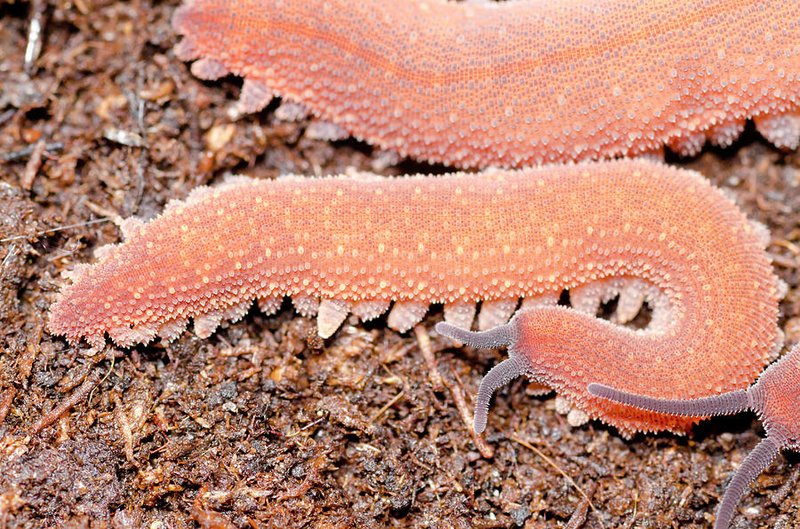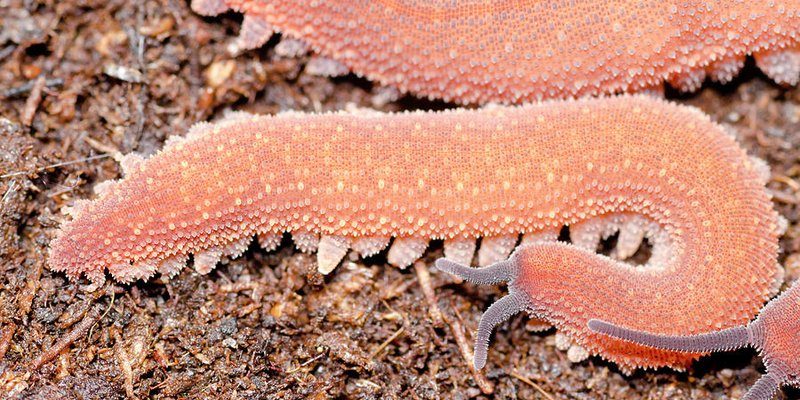
Here’s the thing: the world of genetics can feel overwhelming sometimes. But don’t worry! Understanding the genetic foundations behind velvet worm color morphs is like peeling an onion—there are layers, but once you get into it, it all starts to make sense. Let’s dive into how these unique creatures express their vibrant colors and the science that makes it happen.
What Are Velvet Worms?
To kick things off, let’s get to know our colorful subject. Velvet worms, also known as **onychophorans**, are soft-bodied invertebrates that often live in moist, tropical environments. You might spot them hiding under logs or in leaf litter, where they blend in with their surroundings. With around 200 species worldwide, they can vary significantly in color—from earthy browns and greens to vivid blues and purples.
The fascinating thing about these creatures is their evolutionary history. Velvet worms are often seen as a bridge between **arthropods** (like insects) and **annelids** (like earthworms). So, understanding their genetics not only reveals their color morphs, but also sheds light on a pivotal evolutionary step in the animal kingdom.
The Role of Genetics in Color Morphs
Now, let’s discuss what makes these different colors possible. The genes within a velvet worm’s DNA determine their physical traits, including color. Specific genes control pigments, which absorb and reflect light, giving rise to the myriad colors we see.
Just like how some people have red hair while others are blonde or brown, velvet worms have different genetic configurations that influence their color. This genetic diversity is crucial for their survival. For instance, darker colors can help them absorb heat from the environment, while lighter colors might aid in camouflage against predators.
You might be wondering, “How does this actually happen at the genetic level?” Well, genes can express themselves differently due to mutations or variations, which can happen over generations. This can lead to the emergence of new color morphs that might be well-suited to their specific environments.
Environmental Influence on Color Variation
Interestingly, the environment plays a significant role in the colors velvet worms develop. Think about it: in a rainforest, shades of green and brown help them camouflage. In contrast, worms living in drier, more arid places might evolve into colors that blend in better with their surroundings.
Moreover, factors like temperature, humidity, and even light exposure can influence how a worm’s genetic traits manifest. For example, if a velvet worm finds itself basking in sunlight more often, it may develop a lighter coloration over generations to protect itself from harmful UV rays. This adaptability showcases the beauty of evolution and how genetics and the environment work hand in hand.
Mating and Genetic Mixing
One of the most intriguing aspects of velvet worm color morphs is how they pass on their traits. Velvet worms reproduce via a process called **internal fertilization**, which means they can shuffle their genetic material during mating. This shuffling leads to offspring that may exhibit different colors than their parents.
When two different-colored velvet worms mate, their offspring might inherit a mix of color traits. Picture a painter blending two colors on a palette—what comes out could be a whole new shade! This genetic mixing is vital for creating diversity within a species, allowing them to adapt to changing environments over time.
However, the relationship between color and mating isn’t always straightforward. In some cases, specific colors might be more attractive to certain partners, influencing which color morphs thrive in particular environments. This preference can shape the evolution of color in ways we are still trying to understand.
Why Color Morphs Matter in Ecosystems
So, why does all this matter? Well, color morphs of velvet worms can reveal important insights about ecosystem health. Since they depend on moisture and specific habitats, changes in their coloration may indicate shifts in environmental conditions.
For instance, if a population of velvet worms starts to show a decline in vibrancy, it could signal changes like habitat loss or climate change. Researchers can use this information as a biological indicator to study broader ecological shifts.
Moreover, studying these genetic patterns can help us understand evolution itself. As scientists unravel the complexities of genetics, they can draw parallels with other species, offering clues about how various organisms adapt to their environments over time.
Current Research and Future Directions
There’s a growing interest in the genetics of color morphs in velvet worms, and researchers are using advanced techniques, like DNA sequencing, to explore these questions further. By studying the gene sequences associated with color traits, scientists hope to uncover the underlying mechanisms driving these variations.
Some researchers are also focusing on how climate change might impact these traits. As habitats change, understanding the genetic plasticity of velvet worms will be crucial in predicting how they adapt—or if they can adapt—over time.
You might think of this research as a treasure hunt, where every gene discovered reveals a new piece of the puzzle regarding how life on Earth has evolved. It’s science at its most thrilling!
In conclusion, the genetics behind velvet worm color morphs is a fascinating mix of science, evolution, and environmental interaction. These creatures are more than just colorful oddities; they hold valuable clues about genetic diversity, adaptability, and ecosystem health.
Understanding how genetics shapes these color variations helps us appreciate the incredible diversity of life on our planet. As we continue to study these unique beings, we’ll likely uncover even more connections between genetics and the environment. So, next time you come across a velvet worm, take a moment to marvel at the beautiful complexity hidden in its colors—it’s a living testament to the wonders of evolution!

